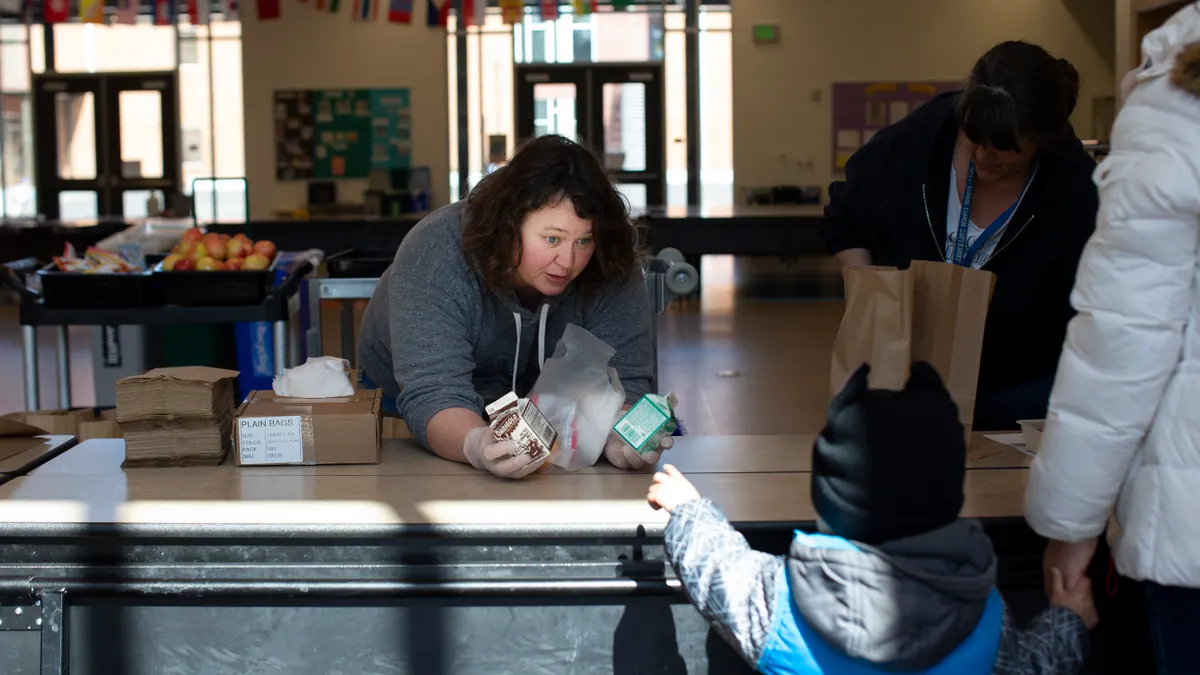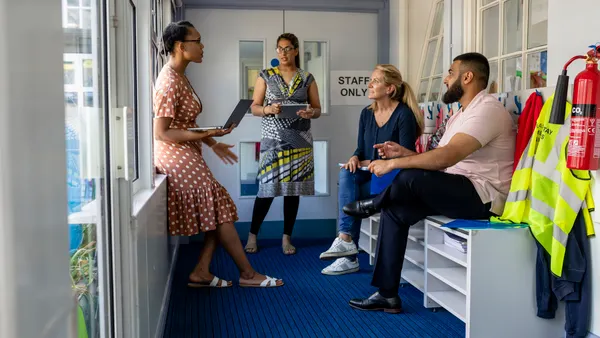Though a pandemic-era program expanding free meals to all students will be unavailable beginning in the 2022-23 school year, there are still a number of options districts can take to expand meal access.
During a Thursday webinar hosted by the Food Research & Action Center, three school nutrition program managers shared best practices based on their experiences with a variety of initiatives to serve students meals.
Improving free and reduced-price meal communication
The deadline to apply for the community eligibility provision for the 2022-23 school year passed on June 30. That option allows high-poverty districts to provide free breakfast and lunch to all students without requiring families to individually apply for free meals. Schools or districts qualify for this program if they have 40% or more students certified for free or reduced-price meals.
For schools that missed the deadline and must submit completed applications from students’ families, communication about the benefits of free meals for students and how to apply is key, said Deborah Mackey, food service director for Mechanicville City School District in New York.
When reminding families about applying for free or reduced-price meals, Mackey said it’s helpful to send out multiple forms of communication about this through texts, emails or mail. Aside from the free meal itself, she said schools should promote how the program helps increase school meal participation rates, which drive additional federal funds to keep the school meal program going.
Districts should also dispel inaccuracies about applying for free and reduced-price meal programs, Mackey said. For instance, families should be informed that school staff are not told which students qualify for this program, she said.
Providing after-school suppers
At Jefferson County Public Schools in Louisville, Kentucky, the district has a system for serving free after-school suppers to students through the federal Child and Adult Care Food Program, said Andrea Wright, the district’s coordinator of nutrition initiatives.
In order to participate, a school must be approved by the state and show there are enrichment activities occurring in an after-school program in order to provide a free meal, she said. This can include clubs, tutoring or homework assistance. A sports program on its own does not qualify, as another enrichment activity must be occurring for at least 20 minutes, Wright said.
Every month, the district files a claim with the state to provide these after-school meals. But in order to do that, Wright has to work with community partners and school leaders to submit which enrichment activities are happening and a roster of students participating.
Serving late breakfast
Bridget O’Brien Wood, food service director at New York's Buffalo Public Schools, has found a lot of benefits in serving breakfast through grab-and-go stations for students running late to class. Typically, a station is open from 8 a.m. to 9 a.m. with one adult monitoring the space. The district serves free meals to all students through the community eligibility provision.
In one high school, about 200 students will be served a meal and go to homeroom during that time, O’Brien Wood said, estimating they can each get through the line in 10 minutes by grabbing pre-made meals — a shorter wait compared to other meal times in the district. That makes the program a great way to serve students who are running behind, she said, especially since 30% of students are late to class in the morning.
Younger elementary school students can get their late breakfasts delivered to them in the classroom, too, she said.













